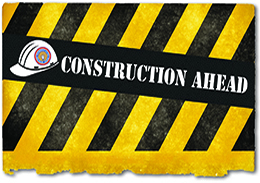| February 2014 | ||
 Print Print  Email Email |
Archive | |

| www.ibew.org |
|
 |
|

|

Five years after the end of the worst recession since 1929, Ohio is inching its way back to economic recovery. The state lost tens of thousands of jobs in manufacturing, services and construction as a result of the 2008 crash. Cuyahoga County, home to the state's largest city, Cleveland, shed 120,000 jobs alone. As elsewhere, construction was particularly hard hit. Industry unemployment spiked to more than 20 percent in 2010. Jobs are finally returning, with the construction industry adding more than 190,000 jobs in 2013, but there is still a long way to go before full recovery sets in. For the IBEW and the building trades in general, the Great Recession wasn't the beginning of tough times, but the continuation of a challenging environment that had eaten into union market share for decades. Outsourcing had eroded Ohio's industrial base — bread and butter work for the IBEW — while aggressive nonunion competitors dominated the small construction market, as big industrial jobs became scarce. Nonunion contractors had also been making big strides in other sectors traditionally strong for the IBEW, including large commercial and hospital jobs. These are the circumstances IBEW's recovery agreements are meant to address: winning work where the IBEW isn't doing it and taking back market share from the competition. And in Ohio, these efforts are starting to bear fruit, at last putting the Buckeye State IBEW on the road to recovery. |

|
© Copyright 2014 International Brotherhood of Electrical Workers | User Agreement and Privacy Policy | Rights and Permissions |